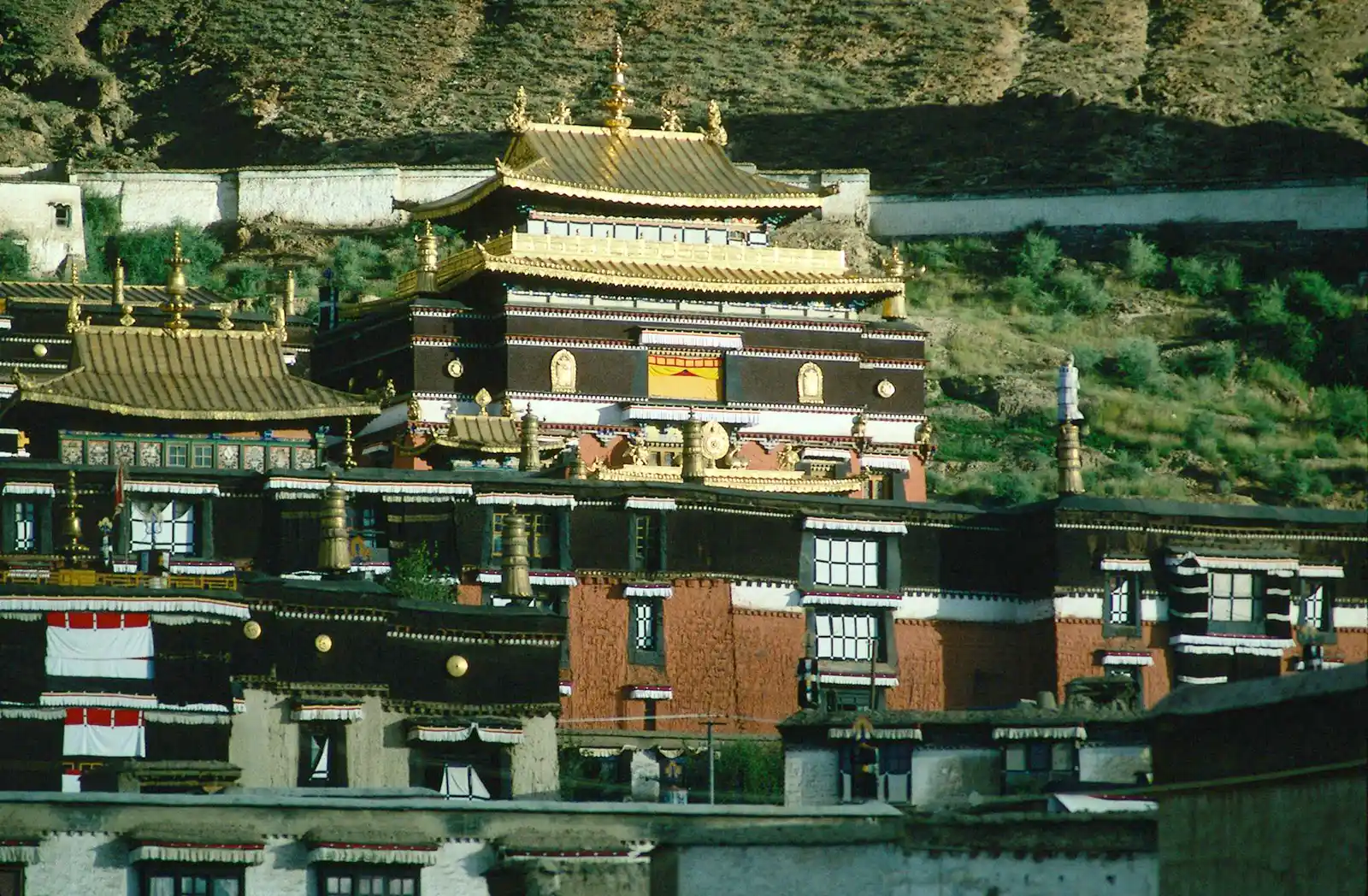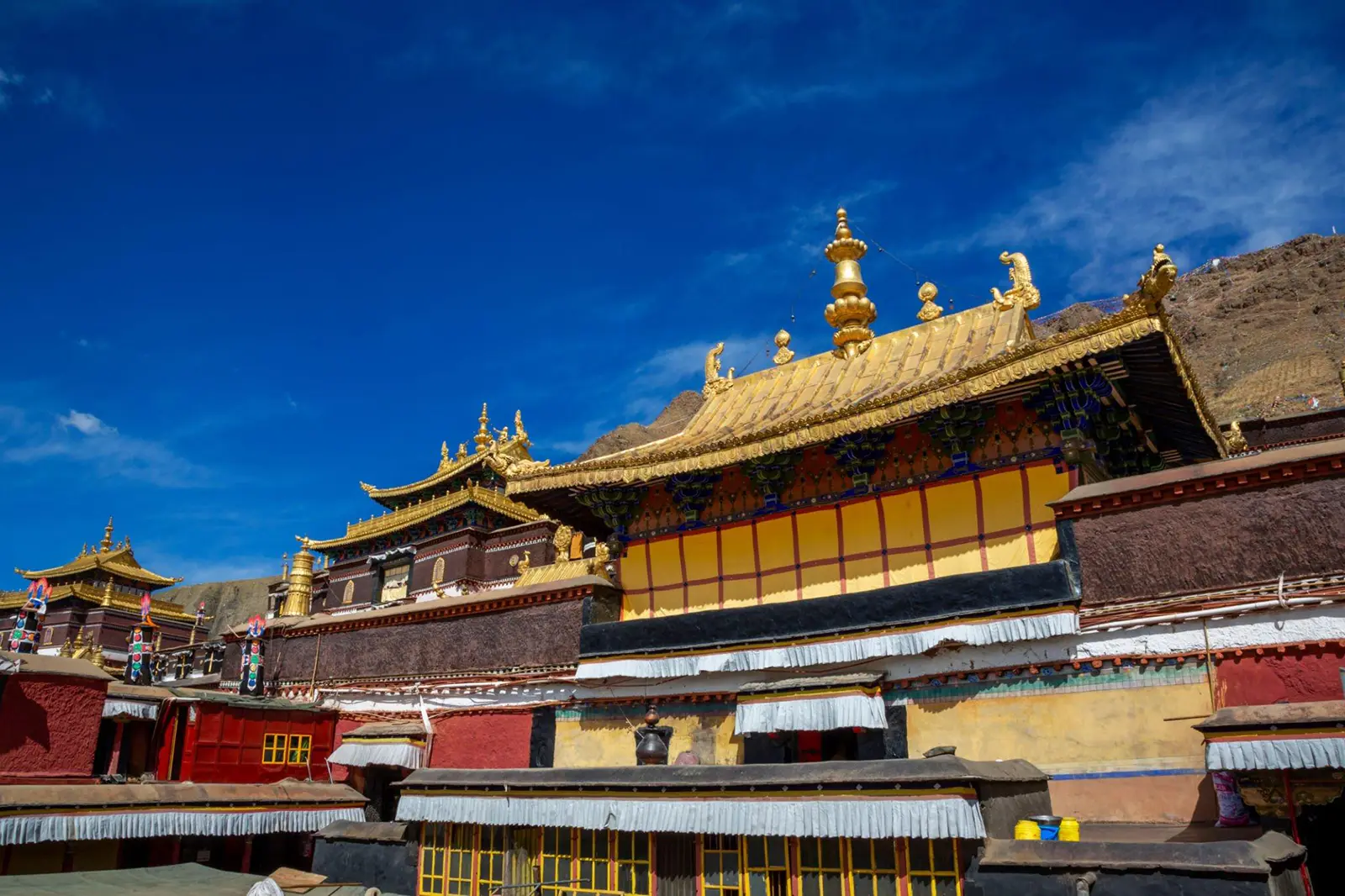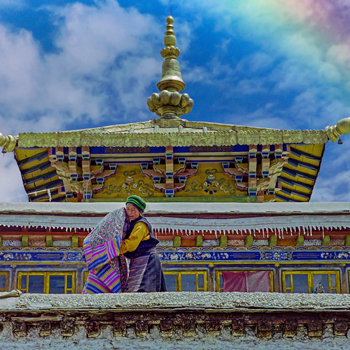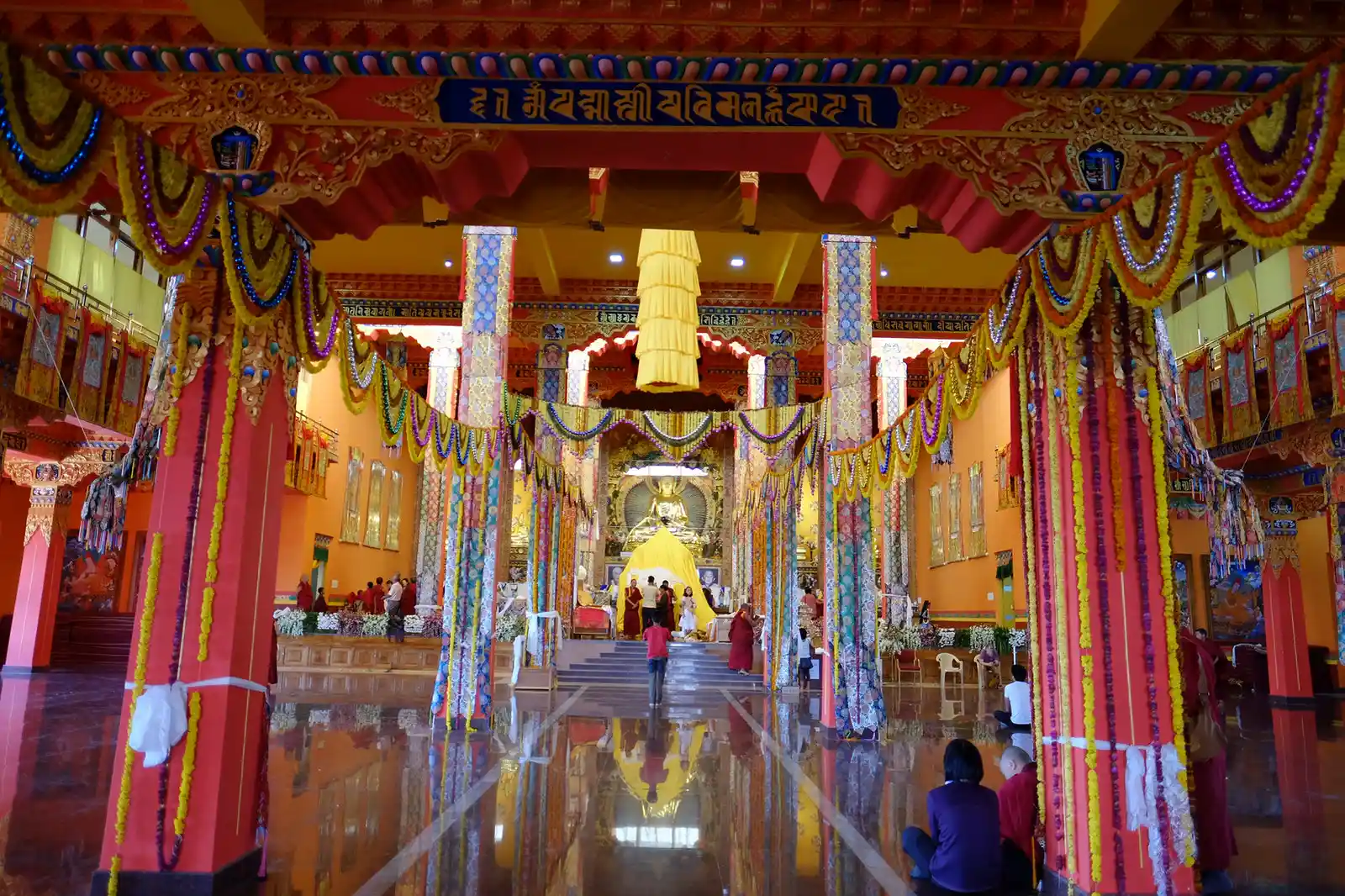Tashilhunpo Monastery – Tibetan Buddhist monastery located in Shigatse
- Monday April 3, 2023
- 0
The Tashilhunpo Monastery, located in Shigatse, Tibet, is an ancient center of Tibetan Buddhism that has been actively serving its followers since the late 15th century. Founded by the first Dalai Lama, Gyalwa Gedun Drupa, the monastery has been an important spiritual center for centuries.
As one of the six great monasteries of the Gelug school of Tibetan Buddhism, the monastery is widely respected for its religious and cultural contributions.
Today, the monastery continues to uphold its traditional teachings and practices and is visited by thousands yearly. With its breathtaking architecture and rich history, a visit to the Tashilhunpo Monastery is an experience that is both visually captivating and spiritually profound.
The spiritual legacy of the monastery
This Gelug school monastery is one of the seminal six Tibetan monasteries, where you can spot monks in traditional robes, a yellow robe, and a striking yellow hat. Novices, known as “getsuls,” can become ordained “gelongs” if they have studied and mastered the monastic rules.
Becoming a “geshe” (spiritual mentor) is incredibly difficult, requiring fifteen to twenty years of hard work and practice – only a few ever make it.
The works of Tsongkhapa, traditional Mahayana texts, and the teachings of Atisha and Nagarjuna form the cornerstone of spiritual practice. But the walls of Tashilhunpo Monastery guard an even more mysterious set of scriptures – the revered teachings of Shambhala, the land of spiritual sages and ascetics, tucked away in the Himalayas.
Tashilhunpo is a primary temple to pay homage to this mystical realm and its wisdom. The mystery of Shambhala is often seen as a faraway utopia lost to mountain peaks. Yet, another perspective claims that even the purest of lands can be accessed through the inner realms of one’s being. Shambhala is considered a metaphysical realm, a heightened consciousness that can be accessed through spiritual practices.
At Tashilhunpo Monastery, the Kalachakra (“Wheel of Time”) teaching by Atisha is safeguarded, closely interlinked with Shambhala’s legend. In 1775, the 3rd Panchen Lama, Lobsang Palden Yeshe, wrote a treatise, “Istria Aryadesha and the path to Shambhala, the Holy Land,” which outlines a sadhana (spiritual practice), to help compassionate beings attain enlightenment.
Structure and Sights of the Tashilhunpo Monastery
The magnificently crafted monastery is situated at the foothills of Drolmari (mountain Tara). Spanning an impressive 300,000 square meters, it radiates with traditional Tibetan style. The complex is a labyrinth of halls, chapels, tombs, and cobbled streets with golden roofs and white, red, and black walls, forming an exquisite composition.
Usually, pilgrims who visit the holy shrines of the monastery walk the kora up the slope of the mountain until they reach the monastery. It usually takes about an hour to explore the entire complex. Along the path, prayer wheels have been installed with mantras of Avalokiteshvara engraved in them, allowing visitors to pay their respects with a ritual detour.
Major Attractions of the Tashi Lhunpo Monastery
1. Statue of Maitreya
The colossal golden Maitreya statue is the pride of the monastery. In 1915, a temple called Jumbo Chenmo was erected to house the statue, which was constructed from 1914 to 1918 under the supervision of the Ninth Panchen Lama. It is said that after the Ninth Panchen Lama’s passing in Qinghai Province, the compassionate Maitreya statue was seen weeping with drops of emotion streaming down the sculpture’s face. Reportedly, all of the lamas present in the monastery verified this occurrence.
An astonishing 110 artisans crafted this 26-meter-tall statue of Buddha, and it is a shining testament to the sheer scope of their skill. Constructed with 230 tons of brass and 560 kilograms of gold and adorned with 300 pearls and 32 diamonds, it glitters and sparkles with precious stones.
An immense solar symbol, crafted from the same gems, lies before the statue. Its silk cape is the largest in the world, and its lotus throne is of European inspiration. The throne is filled with processed grains, while the statue’s body is filled with more miniature Buddha figures, sutras, and jewels. In addition, many lamps filled with yak oil are placed in front of the statue, a sign of respect and reverence for the Buddha of the future.
2. Wall Paintings
The renowned Tashi Lhunpo monastery is renowned for its unique artistic tradition. Many of its halls boast an eclectic style of ‘New Menri’ that emerged in the 1600s, a melding of Indian and Chinese pictorial conventions. Characteristics of this style, exclusive to the Tashilhunpo art school, include:
The majesty of mountains, the peacefulness of water, and the glow of halos are highlighted by the vivid blues and greens, while glints of gold draw attention to the scene’s beauty.
Chinese influences can be seen in the lush nature, fluffy clouds, temples, rivers, and waterfalls, as well as animals and birds dotted throughout.
Each element is intricately crafted, while the figures of gods and other enlightened beings are depicted naturally and relaxedly; a subtle lack of symmetry and stillness sets the New Menri apart from other Tibetan styles.
The robes of the figures are adorned with graceful floral designs, and the clothing is vast and full of movement.
Dragon heads adorn the thrones, and the furniture’s curved backs add to the enchantment.
3. Thangok wall
Gazing upon the striking entrance to Tashi Lhunpo monastery, one can behold the golden-brown spires topped with golden roofs. Rising above the wall is a 9-story white tower, a bold contrast to its surroundings. Built by the First Dalai Lama in 1468, the complex is home to one of Tibet’s most renowned festivals, the Buddha of the Sun.
Held from the 14th to the 16th day of the fifth lunar month in the Tibetan calendar – the event sees a vast thangka, spanning 45 meters in length and 29 meters in width. It depicts the Past, Present, and Future Buddhas, unveiled slowly on the wall, accompanied by the gentle sound of wind instruments.
4. Assembly Hall
Stepping into the Assembly Hall of Tashilhunpo is like strolling through ages past. Its great wooden beams and ornate fabrics make it a fantastic feat of history, and a wealth of ritual relics make it an exceptional experience.
5. Sutra Hall
The sutra hall is the monastic stronghold where Gedun Drupa, the founder, established an old-fashioned printing house to make beautiful translations of Sanskrit originals. They hand-carved over 10,000 wooden boards with Tibetan renditions of the source material. They then used the boards to make ink prints on paper – the traditional Tibetan way of producing books. If you visit, you can take a prayer flag or souvenir calendar home, freshly printed at the monastery.

Conclusion
Tashilhunpo Monastery is a truly remarkable place steeped in history and culture. It offers visitors a unique opportunity to learn about Tibetan Buddhism, observe the beauty of ancient Tibetan architecture, and marvel at the sacred artifacts housed within its walls. The monastery stands as a testament to the resilience of the Tibetan people and serves as a reminder of the importance of preserving our cultural and religious heritage.








